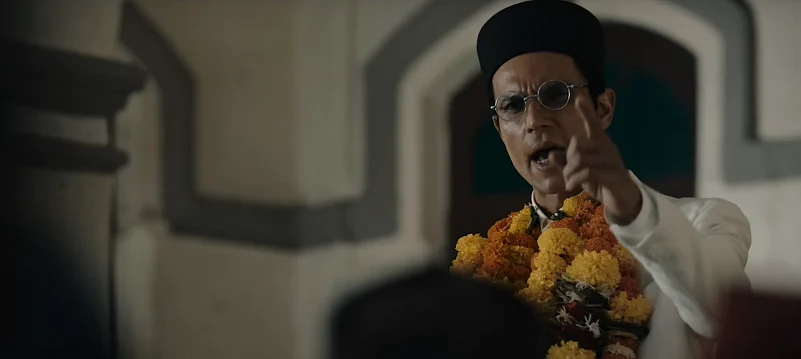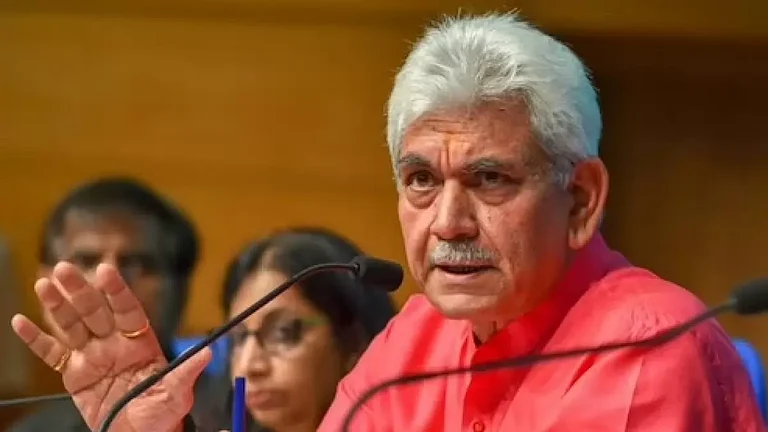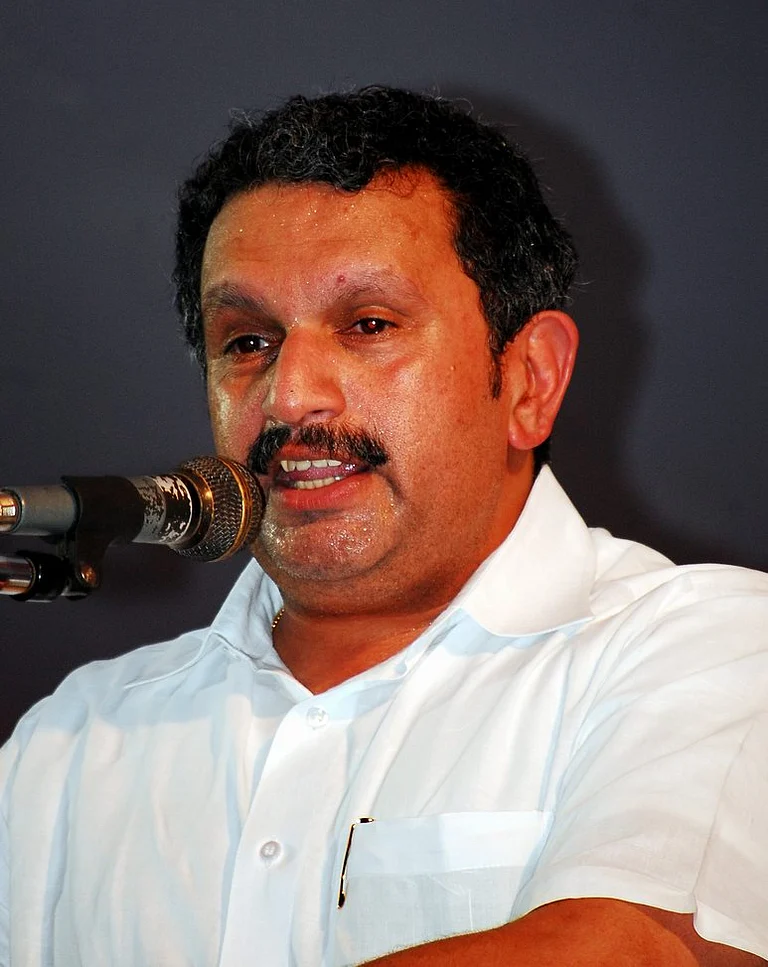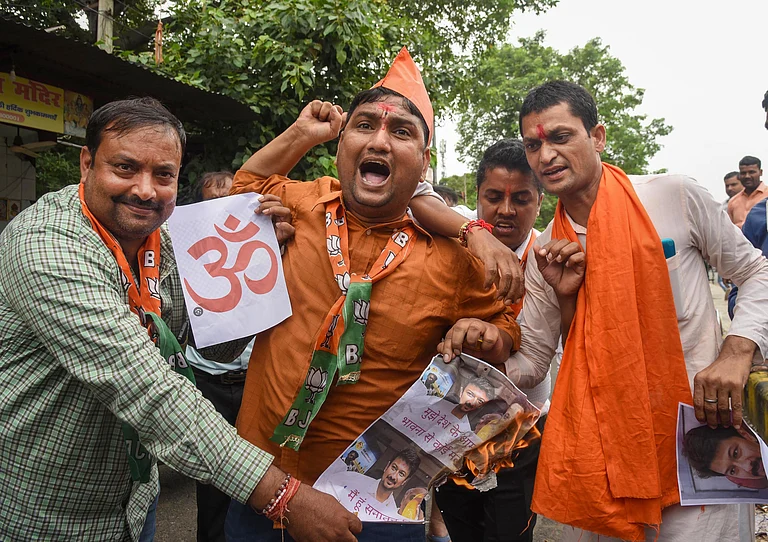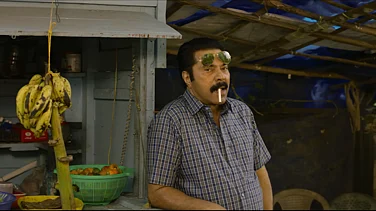Swatantrya Veer Savarkar opens with a grammatical error. “We’ve been told,” reads its opening title card, “that India got it’s [sic] independence by non-violence. This is not that story.” It (almost) ends that way, too. Its penultimate title card states, “6 lakh people attended his last rights [sic].” The film’s strained relationship with the English language is, of course, not a big deal—though it does reveal something crucial about the makers’ attention to detail—because its other failures (historical, factual, and moral) swing from annoying to egregious.
Randeep Hooda’s movie, like many controversial Bollywood dramas “inspired by real events”, wants you to believe—really, truly, deeply—that it is a true story. So it resorts to staple clichés of the genre: archival footage, newspaper clips, and a long disclaimer that lists (contentious) books on Savarkar. Adopting a chronological approach, the film follows him as a revolutionary in Fergusson College, Pune, who goes to London to study law, befriends other freedom fighters, gets arrested, returns to India (as a captive in the Kaala Pani jail), and continues to fight for Hindus’—if not India’s—independence.
Like a six-year-old crying for his candy, Swatantrya Veer Savarkar is needy. It has a few ideas, which it screams and repeats, repeats and screams: violence was the only way to gain independence, the Congress party was cowardly, Gandhi was wrong, Savarkar was right, Akhand Bharat, Hindutva. The period drama glorifies Savarkar (Hooda) through three main methods: framing him as an impassioned patriot, ‘recruiting’ other freedom fighters—such as Bhagat Singh and Subhas Chandra Bose—to sing his praise, and tying him to everything else that the current Hindutva project cares for: adoring Hinduism, Hindu warriors, alternate history; abhorring Gandhi, Congress, peace.
It’s this formulaic approach—informing many recent movies—that hurts Swatantrya Veer Savarkar the most. As opposed to exploring Savarkar’s heart and mind, it unfolds as a broad manifesto. Worse, it doesn’t even use inventive means to peddle what it believes. The digs at the Congress leaders unfold through the following template: A young revolutionary kills a British India official (such as Madan Lal Dhingra assassinating Curzon Wyllie), which cuts to him facing the noose, which cuts to a newspaper, quoting Nehru and Gandhi, calling him “coward”. This happens again and again, compelling you to think, “Yes, my Lord, I get it.”
This desperation sometimes undercuts its own heft. Instead of sticking to facts that complicate Indian history—that, yes, Bhagat Singh’s writings did show that he admired a part of Savarkar—the movie makes them meet (of which there’s no proof). When it’s not doing any political grandstanding, its writing dips into juvenility. Savarkar, for example, tells his fellow revolutionaries in India House that the British government may be spying on them. After opening the blinds, they indeed see two spies right in front of the building. (Yeah, that simple.) In another scene, Savarkar and his friends find out about a fellow revolutionary colluding with a British officer. How? He holds a pound bill, which he just received from the officer, up in the air (!).
This film is so committed to Savarkar’s hagiographic portrait that it reduces him to an angry megaphone, diluting his own human condition. The only scene where that doesn’t happen—and the only bit that works in the movie—is set inside the Kaala Pani jail. After years of captivity, Savarkar has lost his health, vitality, personality. But when he finds out that his wife (Ankita Lokhande) has come to visit him, he sees himself in the mirror: balding head, missing teeth, broken specs. In that fleeting moment, he’s not a revolutionary or an ideologue or a pamphlet—just a man in the autumn of his youth, a prisoner trying to be a husband.
Shrinking Savarkar to a generic Hindu revolutionary work in the film’s favour, as it can elide his disconcerting views on Muslims, his impassioned support of Hindutva, his parochial take on freedom—a question always hiding in plain sight: freedom to whom? Even though the drama does show his mercy petitions, it collapses a decade-length period in short snatches of scenes. And when it talks about Hindutva, it frames the ideology as a question of who it includes (the Sikhs, the Buddhists, the Jains, and the Muslims if they consider their prime places of worship inside the country). But the movie never touches on the main question: What will happen to those who don’t obey the draconian diktat?
In its first hour, the film shows refined aesthetics. Hooda’s performance keeps you hooked; the cinematography displays appropriate theatrics; the editing uses sharp juxtaposition to advance a single-minded agenda. If the shot of a young freedom fighter in front of a noose segueing to ‘peace-loving’ Gandhi compels the audiences to laugh (the ones in the South Delhi theatre, where I watched the movie, literally laughed), then the coronation of King George V cutting to Savarkar getting hit in a jail equates his enslavement to his country’s. But after the first hour, the 178-minute drama exhausts its tricks—the frames become dimmer and dimmer, the themes and the story repeat, as Swatantrya Veer Savarkar embraces the only language it knows: tedium.






